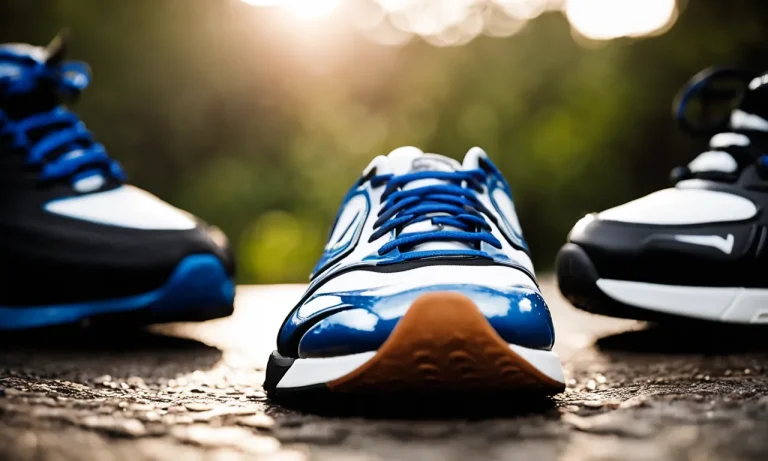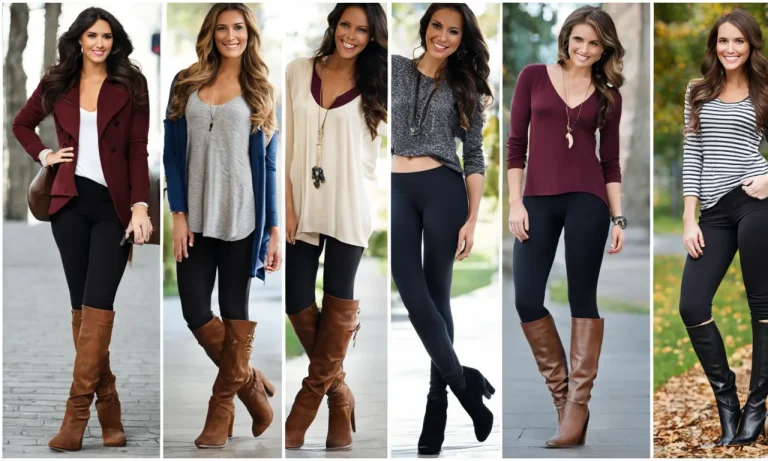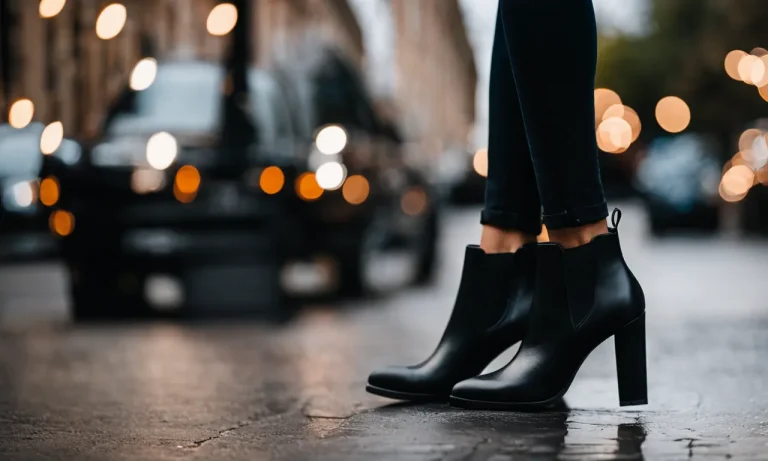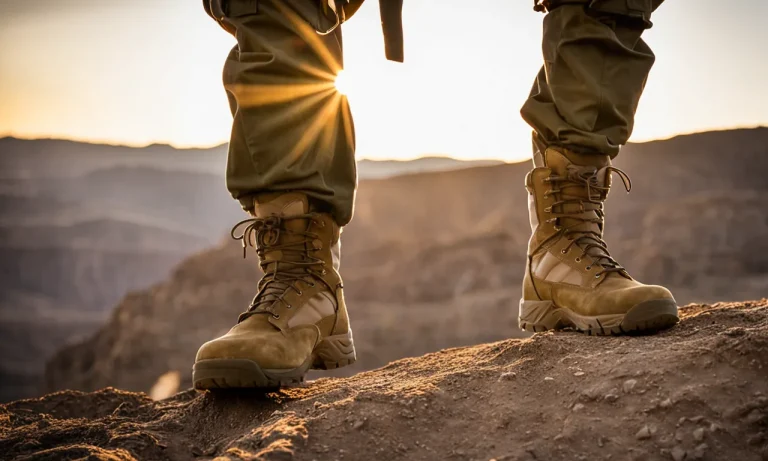Blundstone boots have become a popular footwear choice in recent years for their stylish and rugged design. But with their leather or suede uppers, many wonder if Blundstones can withstand wet weather and keep feet dry.
If you’re short on time, here’s a quick answer to your question: Most Blundstone boots are not fully waterproof out of the box. However, they can be treated with sprays and sealants to make them more water-resistant.
The Construction of Blundstone Boots
When it comes to the construction of Blundstone boots, there are a few key factors to consider. Blundstone boots are known for their durability and quality, making them a popular choice among outdoor enthusiasts.
Let’s take a closer look at the materials used and the waterproofing capabilities of these iconic boots.
Leather and Suede Materials
Blundstone boots are primarily made from high-quality leather and suede materials. These materials are chosen for their strength and ability to withstand wear and tear. The leather used in Blundstone boots is often treated to enhance its water resistance, providing some level of protection against moisture.
However, it’s important to note that leather is not completely waterproof, and extended exposure to water can still cause it to become saturated.
The suede used in Blundstone boots adds a touch of style and softness to the overall design. Suede is known for its luxurious feel and appearance, but it is also more susceptible to water damage compared to full-grain leather.
While Blundstone boots may have some water-resistant properties, they are not designed to be fully waterproof.
Lack of Waterproof Membrane
Unlike some other brands that incorporate waterproof membranes into their boots, Blundstone boots do not have this feature. Waterproof membranes, such as Gore-Tex, are designed to create a barrier that prevents water from entering the boot while still allowing moisture to escape, keeping your feet dry and comfortable.
While Blundstone boots may not have a built-in waterproof membrane, they can still offer some level of water resistance due to the treated leather used in their construction.
It’s important to note that even though Blundstone boots are not fully waterproof, they can still be suitable for various outdoor activities, including light rain or snow. However, if you plan on spending extended periods in wet or rainy conditions, it’s recommended to consider additional waterproofing measures, such as applying a waterproofing spray or wearing waterproof socks.
For more information on Blundstone boots and their construction, you can visit the official Blundstone website at www.blundstone.com.
How Water-Resistant are Blundstone Boots?
Blundstone boots are known for their durability and quality craftsmanship, but are they truly waterproof? Let’s take a closer look at their water-resistance capabilities.
Can Withstand Light Rain and Splashes
Blundstone boots are designed to handle everyday weather conditions, including light rain and splashes. The premium leather used in their construction is treated to provide some level of water resistance.
This means that you can confidently wear your Blundstone boots while walking through wet grass or during light showers without worrying about your feet getting soaked.
Blundstone boots also feature a water-resistant elastic side panel, which helps to keep water from seeping in through the sides. This feature is particularly useful when encountering small puddles or splashes.
Additionally, the slip-resistant soles of Blundstone boots provide excellent traction, even on wet surfaces. This ensures that you can confidently navigate through slippery conditions without compromising your stability.
Not Fully Waterproof for Heavy Rain or Snow
While Blundstone boots offer a good level of water resistance, they are not fully waterproof, especially when it comes to heavy rain or snow. If you plan on venturing into extreme weather conditions, it is recommended to consider additional waterproofing measures, such as applying a waterproofing spray or using waterproof boot covers.
It’s important to note that no boot can guarantee complete waterproofing in all situations. However, Blundstone boots excel in providing reliable water resistance for everyday use and light rain.
If you’re looking for boots specifically designed for heavy rain or snow, it may be worth exploring other options that offer higher levels of waterproofing. Some popular brands that specialize in fully waterproof boots include LL Bean and Merrell.
Ultimately, the water-resistance of your Blundstone boots will depend on factors such as the condition of the leather, how well they have been maintained, and the intensity of the water exposure. Regularly treating and caring for your boots can help maintain and enhance their water-resistance capabilities.
Making Blundstones More Waterproof
Blundstone boots are known for their durability and comfort, but are they waterproof? While Blundstone boots are water-resistant to some extent, they are not completely waterproof. However, there are several steps you can take to make your Blundstones more resistant to water and keep your feet dry even in wet conditions.
In this article, we will explore some methods to enhance the water-resistance of your Blundstone boots.
Treating with Sprays and Waxes
One way to improve the water-resistance of your Blundstone boots is by treating them with sprays and waxes specifically designed for waterproofing footwear. These products create a protective barrier on the leather, preventing water from seeping in.
Before applying any spray or wax, make sure to clean your boots thoroughly and let them dry completely. Once they are clean and dry, apply the waterproofing product evenly, paying extra attention to seams and stitching. Allow the boots to dry for the recommended time before wearing them again.
It’s important to note that reapplication may be necessary after a certain period or after exposure to heavy rain or snow.
Using Waterproofing Products
In addition to sprays and waxes, you can also consider using waterproofing products such as boot liners or waterproof socks. Boot liners are removable liners that can be inserted into your Blundstone boots to provide an additional layer of insulation and water resistance.
They not only keep your feet warm but also help to keep moisture out. Waterproof socks, on the other hand, are made from materials that repel water, keeping your feet dry even in wet conditions. These products can be particularly useful if you frequently find yourself in wet or rainy environments.
It’s important to keep in mind that while these methods can enhance the water-resistance of your Blundstone boots, they will not make them completely waterproof. If you plan to use your boots in extremely wet or muddy conditions, it’s always a good idea to consider wearing additional waterproof gear such as gaiters or rain boots.
Remember to take proper care of your Blundstones by cleaning and conditioning them regularly to maintain their quality and longevity.
For more information on how to care for your Blundstone boots and enhance their water-resistance, you can visit the official Blundstone website at www.blundstone.com.
Caring for Blundstones in Wet Weather
Blundstone boots are known for their durability and comfort, but are they waterproof? Many people wonder if these popular boots can withstand wet weather conditions. While Blundstones are not completely waterproof, they do offer a certain level of water resistance.
Here are some tips on how to care for your Blundstones in wet weather to keep them looking great and lasting longer.
Using Water Repellent Sprays Frequently
One of the best ways to protect your Blundstones from water damage is by using water repellent sprays. These sprays create a protective barrier on the surface of the boots, preventing water from seeping in.
It is recommended to apply the spray before wearing your boots for the first time and then reapply it every few months or as needed. Make sure to follow the instructions on the spray bottle for the best results.
When applying the water repellent spray, it’s important to cover the entire surface of the boots, including the seams and stitching. This will help to ensure that water cannot penetrate through any weak points.
Additionally, it’s a good idea to test the spray on a small, inconspicuous area of the boots first to make sure it doesn’t cause any discoloration or damage.
Letting Boots Dry Completely Before Wearing Again
After wearing your Blundstones in wet weather, it’s crucial to let them dry completely before wearing them again. Moisture trapped inside the boots can lead to mold, mildew, and unpleasant odors. To speed up the drying process, remove the insoles and place them in a well-ventilated area.
You can also stuff the boots with newspaper or use a shoe dryer to absorb the moisture.
It’s important to note that Blundstone boots are made from premium leather, and excessive exposure to water can still cause damage over time. Therefore, it’s best to avoid wearing them in heavy rain or submerging them in water.
If your boots do get wet, make sure to follow these care tips to minimize any potential damage.
For more information on caring for Blundstone boots and keeping them in top condition, you can visit the official Blundstone website at www.blundstone.com. They provide detailed care instructions and recommendations for different weather conditions, helping you to properly care for your beloved Blundstones.
Conclusion
While most Blundstone boots are not inherently waterproof, they can be made more water-resistant with sprays, waxes and sealants. Treating your Blundstones and letting them dry fully between wears will help extend their life in wet weather.
Just don’t expect them to keep feet as dry as rubber rain boots in heavy rain and slush.






